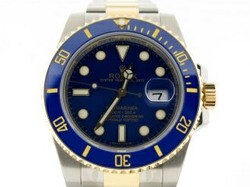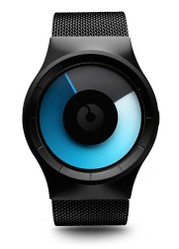One look at the price tag of luxury watches from brands like Patek Philippe and Audemars Piguet and you may wonder, why are these watches so expensive? What makes a watch sell for over $100,000 while another costs under $100? There are actually many reasons timepieces can be so expensive, including the cost the manufacturer spends developing and making the watch. Here's a look at the many factors that contribute to a watch's price.

Why Do Luxury Watches Cost so Much?
Ever wondered why luxury watches cost tens of thousands of dollars? Here are 5 reasons these timepieces are so expensive -- and why they should be!
Cost to develop and produce the watch
You may be surprised to learn that many watches actually take years to develop, particularly the movements. Many well-known watchmakers, including Audemars Piguet and Rolex, produce their own in-house movements that sometimes take many years to perfect. The cost for engineers to plot out new movements and design them before they're even made can be enormous. After the cost to get the movement designed, the watchmaker must then spend time and money testing the movement for efficiency and durability.
While the movement can often be a large part of the cost of developing a watch, time must also be spent designing and producing the other components, even the bracelet. Using high-quality materials and labor to hand-assemble the tiny components and then finish each part is a time-consuming and expensive endeavor.
Finally, remember that well-made timepieces can take only a few days or many months to produce and there is typically a very high demand that can't be matched.
Cost of the movements
There are many companies out there that produce their own in-house movements (mechanical and the more affordable quartz) and this does tend to lower the cost to make the movements. Still, mechanical movements are still very expensive to produce. The majority of watchmakers buy movements and then modify them afterward and these movements range in price a great deal by the level of complication, the grade and more. Very basic Swiss-made mechanical chronograph movements cost under $300 while Japanese quartz chronograph movements may cost no more than $20. It's not uncommon for very complicated movements to cost the watchmaker over $1,000 each. This is one of the main reasons you see limited edition watches; some luxury watches are simply too expensive to make in large numbers.
Time to Produce
While most watches on the market are mass-produced in batches of up to 10,000, it can take up to one year to produce each luxury watch. Skilled, trained watchmakers must design and produce mechanical movements that are finished, tested and decorated. Each part of the watch must also be hand polished by hand under a microscope. Given the labor costs, it's no wonder you see Panerai watches selling for thouands of dollars.
Distribution of Profits
Watches typically go through many people before they reach you and each group needs a certain amount of profit for their involvement in the production, shipment and distribution. Watchmakers often buy parts (particularly movements) from other companies and then pass the watches to a distributor. Once the watchmaker and distributor receive a profit, taxes are paid and the watches are shipped around the world. From there, a retailer sells the luxury watches to consumers. At the retail level, the store itself must receive a profit and the staff selling the watches often work on commission. The retailer must also make enough profit to cover any marketing that must be done to sell the watch.
Low Numbers = Higher Costs
Finally, there is the simple matter of volume and cost distribution. Affordable watches sold in department stores are usually made in batches of 10,000 or more with millions produced. The cost to develop and make these watches can then be distributed over a large number of watches to lower costs tremendously. Many luxury watches, particularly limited edition watches, are made in limited numbers of perhaps 1,000. These watches often have much more expensive parts to begin with and the limited numbers means the cost to make the watches can't be spread as far. Each watch is likely to have a great deal of cost invested in it, from hand labor to custom made components.
Advice
Before you buy a luxury timepiece, try to determine if the quality matches the price. The market should also justify this price, meaning there isn't a wide variance in prices for the watch among retailers. You should also check the resale market before you make your decision, as many used luxury watches hold their value relatively well. You may also want to consider how much the brand's name means to you, as there will almost certainly be a premium for the name alone.
If you aren't quite willing to part with the full retail price for a watch but love the intricacy and aesthetics of watches from watchmakers like Audemars Piguet and Panerai, consider buying an authetic preowned luxury watch from Time on Your Hand.
You might also like
Wrist Watches for GirlsLittle girls and pretty wrist watches are a perfect match.
Ziiiro Watches - Unique And StylishIf you're looking for an unusual, but stylish watch, then the Ziiiro range of...



 6 Tips for Buying Used Luxury Watcheson 11/04/2012
6 Tips for Buying Used Luxury Watcheson 11/04/2012
 Top 6 Luxury Watches for Sportson 10/23/2012
Top 6 Luxury Watches for Sportson 10/23/2012
 Top 5 Most Stunning Audemars Piguet Watches for Saleon 09/28/2012
Top 5 Most Stunning Audemars Piguet Watches for Saleon 09/28/2012
 Quartz vs Mechanical Movement Watches: Which is Right for You?on 09/23/2012
Quartz vs Mechanical Movement Watches: Which is Right for You?on 09/23/2012


Comments
Some expensive watches have jewels in the movement too. Fab!